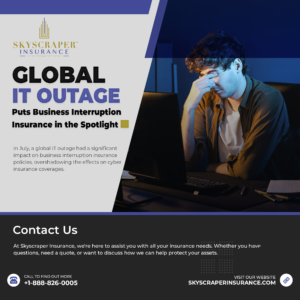Enhancing insurance clients’ experiences across conversations and transactions can create long-lasting relationships and increase loyalty.
Insurance customers’ demands are changing. By incorporating these tips into their customer service strategies, insurance agencies can ensure that all clients leave interactions satisfied.
Positive customer service has always been mandatory for agencies looking to build and sustain business, but given the rise of digital — coupled with the effects of the pandemic — there has been a widespread increase in expectations for brands to provide consistent and exceptional service. In fact, according to a survey by Infobip, 89% of American consumers state that good customer service is more important now than ever due to the pandemic.
Further, customers have the lowest attention spans they’ve ever had and are spoiled for choice. Despite the increase in queries that many industries saw during the pandemic, customers still demand shorter wait times and fewer hiccups along the way. Above all, they want to leave the interaction satisfied.
The insurance industry is not exempt from these growing expectations. Travelers recently surveyed its top independent agents and findings indicated that even the best producers have a significant opportunity when it comes to the customer service tactics that can help them grow their business lines, especially in this uncertain environment.
As an agent with more than 20 years’ experience, here’s what I have learned along the way that has enabled my agency to succeed:
1. Ensure you understand the customer ahead of the conversation.
If the call has been scheduled prior, do your due diligence ahead of when you pick up the phone. This may require back-end data from your company and a previous call log with associated claims, but it will go a long way in knowing what the client needs and why they’re asking for it now.
2. Provide options that may not always benefit the insurer.
This should be a no-brainer, but in order to truly provide quality customer service, an agent must always keep what’s best for the customer in mind. Not only does this mean going above and beyond the call of duty, but it also means providing the best advice — regardless of the monetary outcome for the insurer. While it may affect ROI for the company in the short term, it ensures customer loyalty and increased revenue in the long run.
3. Remain directly accessible even after the conversation/purchase.
Consumers appreciate follow-ups and check-ins when they aren’t directly tied to the bottom line, and they like knowing it’s coming directly from a representative vs. an automated service. Check-in from time to time to ensure they’ve been properly cared for and that their policy is meeting their needs.
4. Understand each customer’s preferred communications channel(s).
In relation to the prior point, it’s important to understand how and when customers like to be communicated with — particularly during any type of global, national or even regional crisis (which, as you know, is a common time to be in touch with insurers). Do they prefer email, call or text, and what time of day is best? Do they enjoy follow-ups and reminders, or would they rather reach out themselves? All of this comes with relationship-building and should be treated as an implicit and increasingly important part of the agent job description.
5. Know that great customer service means being there for the customer, even if you’re not.
Your customers want access to information and service 24/7, and let’s face it: not everything requires a live conversation. In many instances, consumers prefer to go online and make basic policy changes and administrative tasks themselves, just like with any other industry. Encourage adoption of digital self-service capabilities or promote your carrier’s tools, so that customers can take care of the simple stuff if and when they want to.
Final thoughts
Incorporating all of the above into your customer service arsenal is sure to not only please customers throughout conversations and transactions but also create long-lasting relationships that increase company loyalty and a positive brand reputation.




